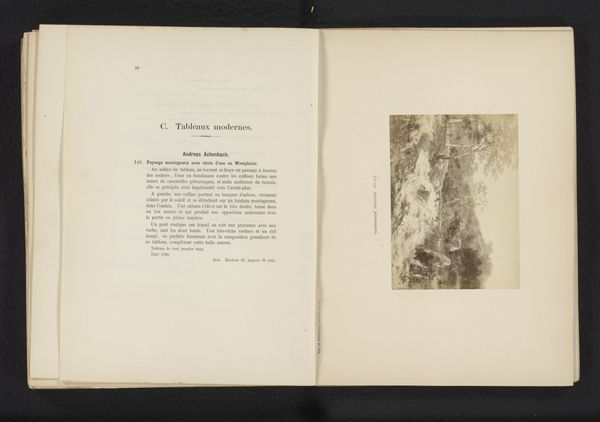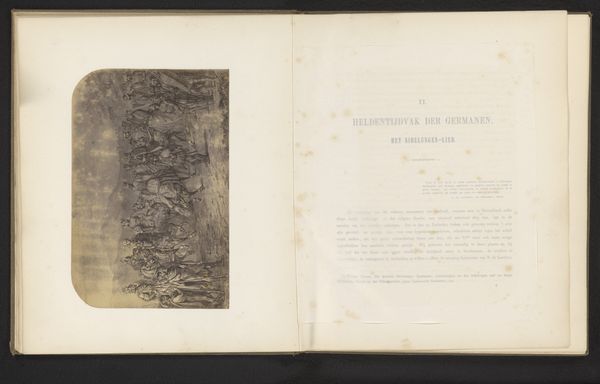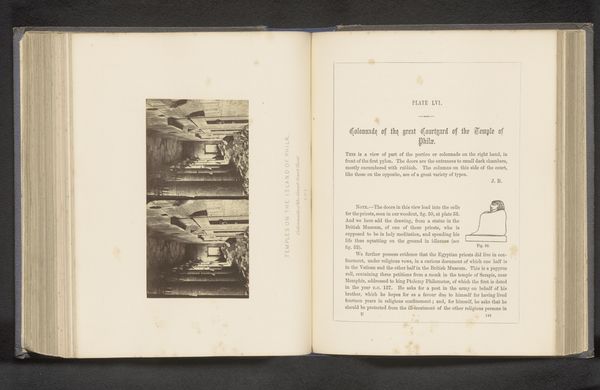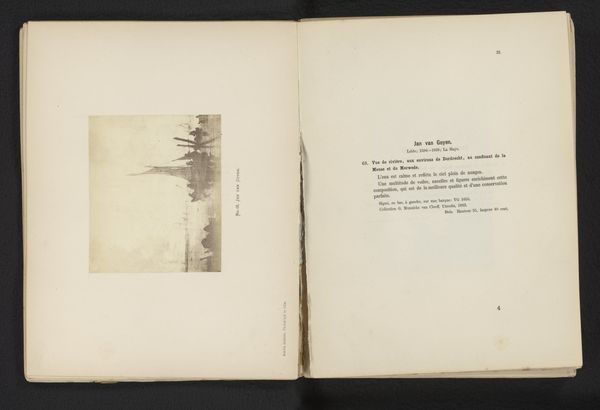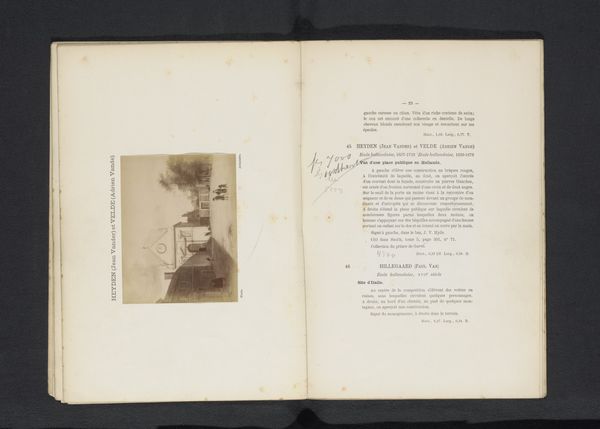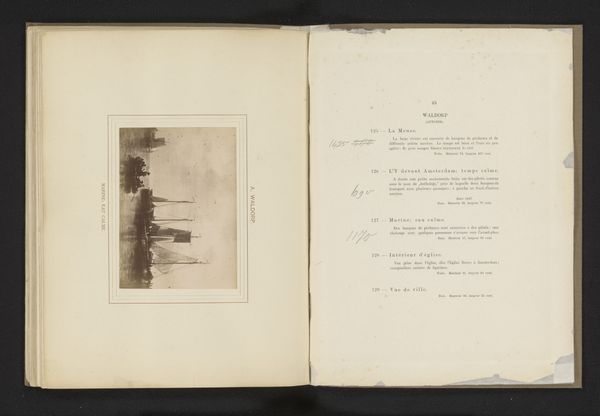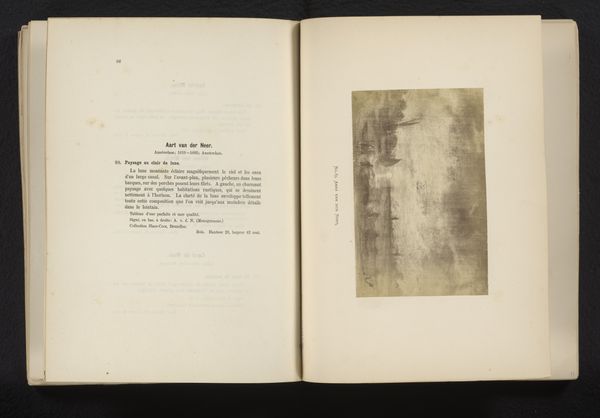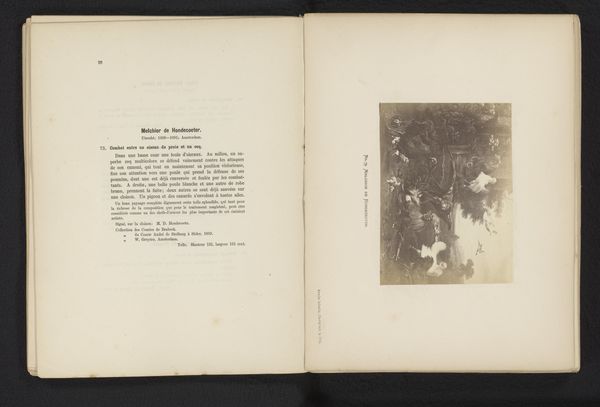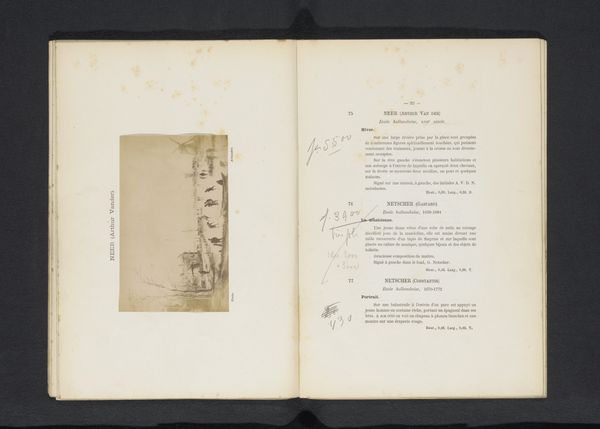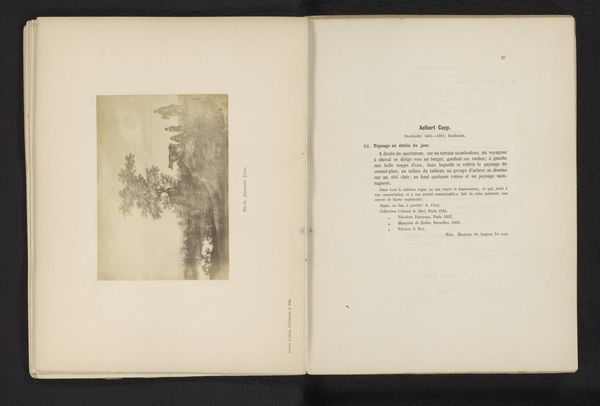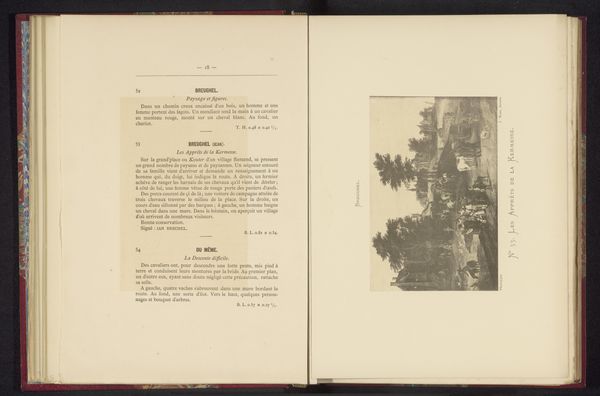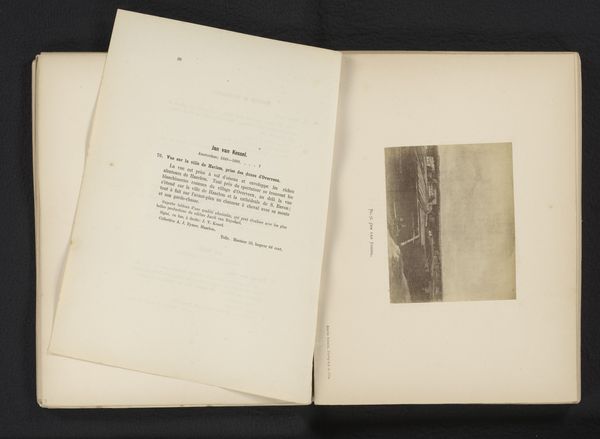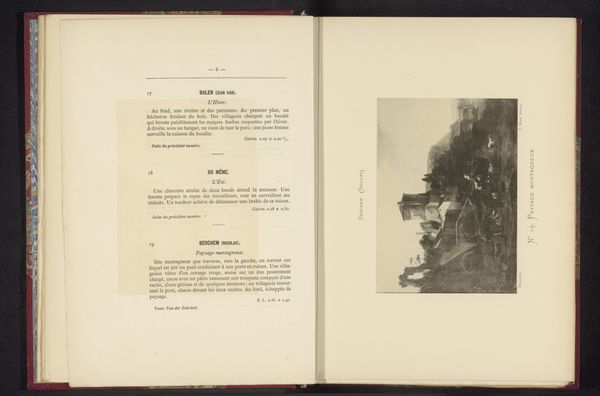
print, photography
#
sand serif
#
aged paper
#
homemade paper
#
16_19th-century
#
paperlike
# print
#
landscape
#
photography
#
orientalism
#
thick font
#
handwritten font
#
golden font
#
letter paper
#
paper medium
#
historical font
Dimensions: height 232 mm, width 156 mm, thickness 23 mm
Copyright: Rijks Museum: Open Domain
Curator: Hmm, this is an interesting one. We're looking at an opened book, published in 1880: "Granada en de Alhambra: geschiedenis en reisherinneringen," by J.E. de Sturler. Editor: Immediately, it evokes a sense of travel and bygone eras. The sepia-toned photograph opposite the title page whispers stories of sun-drenched landscapes and architectural marvels, and, I feel a very aged quality from the paper that the printing lies on. Curator: You're right, the photographic element is very powerful. Its tones resonate with an Orientalist aesthetic—that fascination with the "exotic" East, common during that era. The Alhambra itself became a potent symbol, right? Editor: Absolutely! The Alhambra, for many, symbolized the romantic allure of a lost Islamic past in Europe, a testament to cultural exchange and architectural splendor. Look at the cover and fonts: even they suggest weightiness, thick characters. But not a dark weight: a golden one. Curator: Precisely. I find it evocative how the handwritten fonts nestled around the images hint to something older—almost an artifact. Travelogues like this weren't just about presenting facts, but crafting an entire atmosphere and cultural narrative. Editor: It feels like this book intends to do much more than catalog: it wants to transport you. The photographs act as tangible memories—or at least, idealized versions of memories. The text aims to solidify that. I bet this was meant to live as someone's treasure on a personal bookshelf, the print feels almost more precious in light of that purpose. Curator: Yes, and think about the impact those early travel narratives had in shaping European perceptions of the Arab world! Images of architectural grandeur fueled imaginations, created fantasies and perhaps also, biases. The layered history in each image is what speaks to me. Editor: For me, seeing the printed photo evokes all those questions: who took it, who posed or inhabited that scene, who poured over it and what did they then dream of. A little printed photograph is like a seed planted in someone’s mind, where a version of this location bloomed, filtered through subjectivity.
Comments
No comments
Be the first to comment and join the conversation on the ultimate creative platform.
